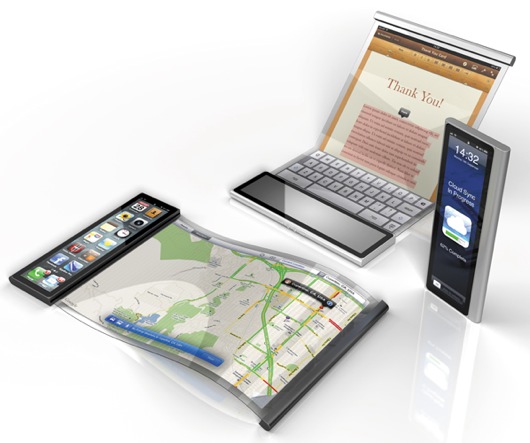Apple TV, iTunes downloads slowed by Google DNS
Users experiencing slow movie rental downloads via Apple TV or iTunes should make sure they’re not using a centralized domain name service such as Google DNS, which can dramatically slow down media access to Content Delivery Networks.
A variety of Apple TV users have reported extremely long download times when trying to rent movies. The problem does not appear to be with Apple’s servers, the Akamai Content Delivery Network Apple uses to deliver media downloads efficiently, nor the design of iTunes or Apple TV hardware. Instead, it’s often cause by a centralized Domain Name Service, such as Google DNS or OpenDNS, according to a variety of reports.
Last December, Google launched Google DNS as a free service intended to give users an alternative to their Internet Service Provider’s own DNS servers. At the time, the company touted faster performance and security in using its own DNS, which enables client computers to look up IP addresses of Internet servers from their easier to remember domain name.
While Google DNS (and similar services, such as UltraDNS and OpenDNS) may enable users to bypass domain blocking rules and redirects configured by their ISP or their company’s IT department, and can also speed network performance in some cases by resolving IP addresses faster, the centralized DNS services can also defeat the distributed nature of DNS itself.
Network users are supposed to look up IP addresses from a nearby server, which itself queries and caches answers to name and address lookups from other DNS systems, distributing the workload across the network. CDNs like Akamai, which Apple works with to deliver iTunes downloads, use DNS lookup information to locate where users are, and then optimize content delivery via the nearest available server.
When millions of users all tap into the same DNS server addresses to resolve domain names, as Google DNS does by design, Akamai and other CDNs route content to those users along the same path, preventing the network from working optimally. This causes problems not only for Apple’s iTunes, but also any other media streaming or download service that uses a similar CDN strategy to distribute downloads.
May cost foreign users extra
In addition, according to a report by APC, some foreign providers that have dedicated media links to enable efficient, cost effective delivery are bypassed when users configure their systems to use a service like Google DNS, bypassing the user’s quota for free downloads.
This can result in extra costs for the user, as their otherwise-free media downloads are billed directly because they don’t take advantage of local delivery links and instead pull data directly from American servers.
Reverting to local DNS services
Google provides instructions on how to configure its own Google DNS services, which can be used to revert back to the original DNS settings. In many cases, users obtain automatic DNS server assignments from their ISP in the same DHCP process that provides them with their IP addresses.
Users with wireless base stations or any devices with statically configured network settings (such as an Apple TV) may need to verify that their network devices are all using the local DNS addresses from their ISP, rather than Google DNS, if slow media downloads are a problem.
The Future of Apple Design: 2017 iScroll

Everyone wants to know what Apple’s Next Big Thing will be. So we gazed into our crystal ball to glimpse these four ripped-from-the-future prototypes of devices that Apple could make in the years ahead.
The love child of the iPhone and the MacBook will revolutionize mobile computing and entertainment.
Lugging around a bag crammed with—at a minimum—an iPhone, MacBook, and headphones sometimes makes us feel like we’re schlepping more than a sherpa. Come 2017, the iScroll will not only free us all from those burdens, but it’ll also wire us up like never before.
When you first pick one up, you might mistake it for a tall, skinny iPhone from five or six years before—but that impression will change when you pull on the right side. A bendable FOLED (flexible organic light emitting diode) touchscreen will unspool and flicker to life in glorious 1440p. This is not just wishful thinking—Sony and Samsung have been tinkering with FOLEDs for years now, and while they’re awfully expensive today, those prices are expected to plummet fast. Touchscreen versions don’t exist yet to our knowledge, but we trust that Apple can crack that nut.
Back to this awesome bendable display. What better way to browse the web, watch a flick, or scan a map on its enjoyably large, 8x11-inch surface? Wireless earbuds will pipe the audio right into your skull, and the non-bendable Multi-Touch display will house a 24-hour battery, 5G/Wi-Max radio, 1TB of RAM, and a 10MP camera for videos, photos, and FaceTime calls. Knitting it all together will be Hyena, Apple’s sleek new operating system that, in a long-expected move, will merge the old Mac OS and iOS. To ensure privacy, the back side of the display will be blank silver, save for the softly glowing Apple logo in the center.
1. This roll-out, bendable FOLED touchscreen will be perfect for reading maps, perusing the e-newspaper, or just tucking into a movie, app, or game.
2. When in laptop mode, the iScroll’s main touchscreen will become a huge Magic Trackpad—and yes, it’ll know the difference between intentional gestures and just resting your wrists to use the keyboard.
3. Advances in memory plastics will allow the iScroll’s bendable display to stiffen on command, converting it into the airiest MacBook yet.
4. America is big. So even in 2017, we’ll still encounter places with no signal. But when we return to "civilization" the iScroll will automatically sync its 1TB of RAM with your permanent cloud storage.
But for some tasks like writing or video editing, you can’t beat the laptop’s form factor. In those moments, you’ll tap a hardware button along the side to trigger a memory-plastic effect that’ll stiffen the bendable display, kinking it about a third of the way along its length into a familiar, MacBook-esque shape. The non-bendable display will become a trackpad, a keyboard will come up on the not-bendable-anymore display, and you can get cracking.
In what might seem like a downside today, the iScroll will have no permanent onboard storage—everything will sync constantly to and from the cloud, deploying the rock-solid MobileMe3 service to keep your latest data instantly available no matter which device you use.
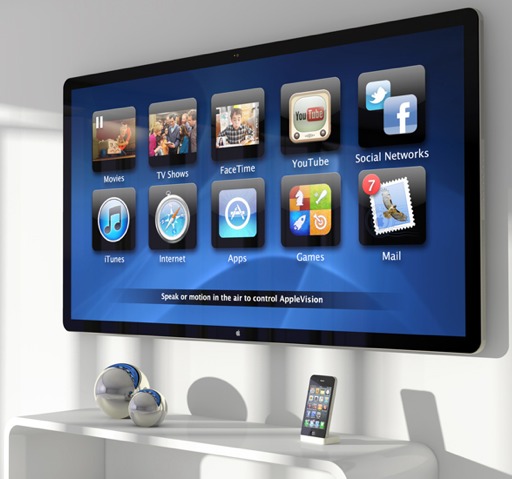
2012: AppleVision
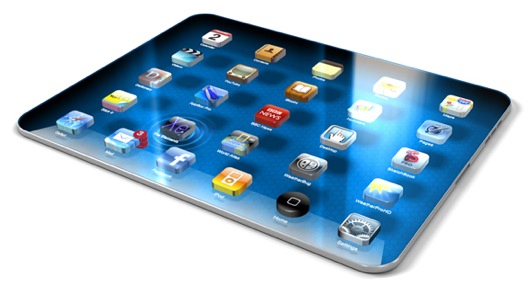
2012: AppleVision
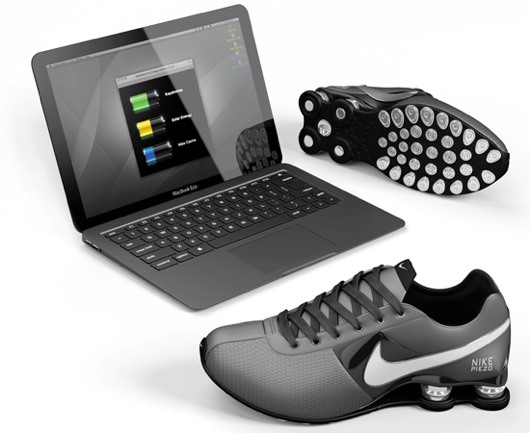
2012: AppleVision
Mac App Store to Open January 6, 2011
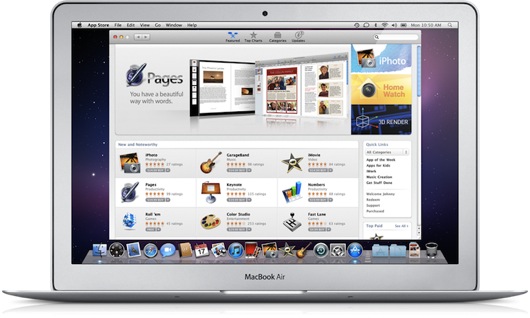
Mac App Store running on MacBook Air
Apple has announced that the Mac App Store will open its doors on Thursday January 6, 2011. The Mac App Store will be available in 90 countries at launch and will feature paid and free apps in categories like Education, Games, Graphics & Design, Lifestyle, Productivity and Utilities.
“The App Store revolutionised mobile apps,” said Steve Jobs, Apple’s CEO. “We hope to do the same for PC apps with the Mac App Store by making finding and buying PC apps easy and fun. We can’t wait to get started on January 6.”
The Mac App Store lets you browse new and noteworthy apps, find out what’s hot, view staff favourites, search categories and read customer ratings and reviews. Like on iPhone, iPod touch and iPad, you can purchase, download and install apps in just one click and start using them immediately. Purchased apps can run on all of your personal Macs and updates are delivered directly through the Mac App Store so it’s easy to keep all of your apps up to date. The Mac App Store is available to Mac OS X Snow Leopard users as a free download through Software Update.
Apple, Microsoft, Oracle partner to acquire Novell patents for $450M
Apple has apparently formed a joint venture with Microsoft, Oracle and EMC to purchase 882 patents from the recently acquired Novell.
As revealed by the blog FOSS Patents, on Dec. 9 the four companies, under the name CPTN Holdings LLC, acquired the patents for $442 million. The consortium of companies, said to have been organized by Microsoft, has defined the newly formed company as one that is in the market of "patents."
"Within the consortium, the four players will have to agree on a common denominator concerning the patents to be acquired," author Florian Mueller wrote. "They’ve apparently been able to agree that those patents are valuable assets to own."
The list of patents remains unknown. Earlier this year, Novell, which specializes in enterprise operating systems, was acquired by Attachmate.
The apparent acquisition of Novell patents is not to be confused with a patent sale from a very different, but similarly named company, Nortel. Earlier this week, it was rumored that Apple, Google and others are bidding for 4G wireless network patents owned by Nortel, a bankrupt Canadian telecom.
Ownership of patents has proven to be an extremely valuable asset in the mobile business, as many of the major players in the smartphone market are suing one another. In fact, on Wednesday, Finnish handset maker Nokia announced it had filed new lawsuits accusing Apple of patent violation in the U.K., Germany and the Netherlands.
